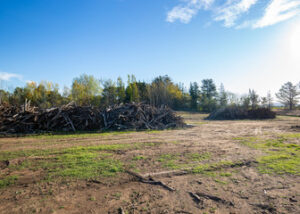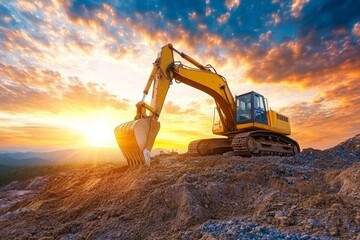Land Clearing Georgetown helps to prevent pest infestations by ensuring that unwanted plants don’t receive access to water, sunlight or nutrients. Dense areas of vegetation offer natural shelter to mosquitoes, gnats and rodents while rotting trees invite termites.

The type of land and its terrain significantly impacts the cost of clearing. Flat land is generally easier and less costly to clear compared to rocky or steep sites.
If you own a property that’s become overgrown with weeds, shrubs, and trees, it may be time to consider land clearing services. These professionals can help you remove invasive plants, clear debris, and prepare the land for landscaping or construction projects. They can also assist you with preventing wildfires, pest infestations, and soil erosion.
The process of clearing overgrown vegetation involves identifying and removing harmful plants without harming beneficial ones. Effective clearing services are well-versed in environmental protection standards and work closely with local ecologists to ensure the health of the ecosystem.
They can remove invasive plants and replant the space with native species that promote healthy growth. They can also work with you to preserve and protect valuable trees on your property. They can also re-mulch bare soil to prevent soil erosion and help with water runoff management.
When you choose to use land clearing services, be sure to do your research beforehand. Different regions have specific guidelines for preserving tree roots and maintaining ecosystem integrity. Make sure you choose a service that adheres to these guidelines to avoid fines or other liabilities.
A well-maintained landscape can improve your property’s value. It can create a more appealing view, as well as make your property safer. A buildup of dead leaves, twigs, and branches can be a fire hazard and may also cause structural damage. Additionally, rotting trees and other overgrown plants attract gnats, mosquitoes, and other pests.
In addition, overgrown vegetation can reduce the amount of sunlight reaching areas of your property. This can cause plants to struggle with moisture and nutrients, leading to a decrease in their overall health. The best way to prevent overgrowth is to keep up with regular maintenance. This includes trimming weeds, digging out unwanted plants, and using a cover crop to inhibit regrowth.
Preventing Wildfires
Land Clearing is often a necessity for projects in the wildland-urban interface (WUI) where human development meets natural vegetation and open spaces. Because wildfires pose a significant risk to people and property in these areas, steps must be taken to prevent them from happening in the first place.
This includes clearing the surrounding area of invasive species, dead or otherwise dry vegetation and debris that can easily catch fire. It also means taking steps to ensure that the land can be safely used for construction, farming or other purposes by removing obstacles like trees, brush and weeds.
Clearing the landscape can have other positive impacts, as well. It can help restore wildlife habitats by providing new grasslands for grazing animals and wetlands for amphibians and birds. Additionally, it can help reduce the spread of invasive species that compete with native plants and animals for resources.
To achieve these benefits, it’s important to consider the scale of the project and the type of vegetation present. Different types of land clearing techniques are available, with some being more environmentally friendly than others. For example, hand clearing is a less invasive option but can be a lengthy process. On the other hand, controlled burning or prescribed fire can be a quick and effective way to clear land but requires careful planning.
Other methods include mulching or chipping the leaves, branches and stumps of harvested trees. They’re then removed from the site and either reused or recycled. Bulldozers can be used to level the site and create a smooth surface for construction, farming or other purposes. Finally, the soil is often stabilized using erosion control measures and seeded or covered with mulch to prepare it for its intended use.
Preventing Pest Infestations
Pest infestations are dangerous for both humans and pets, but many of them can be prevented with some simple steps. Proper food storage, sweeping and wiping surfaces, and disposing of waste regularly can reduce the likelihood of a pest infestation. In addition, removing piles of weeds, firewood and debris can eliminate the ideal hiding spots and breeding areas that pests are attracted to. Likewise, fixing leaky pipes and making sure there is no standing water around the property can deter pests, such as mosquitoes and flies, from entering buildings.
Entry points into the home or office are another area of concern. Cracks in the foundation, ripped screens and un-sealed gaps around doors and windows can allow pests to make themselves at home. This can lead to further damage from gnawing and nesting, as well as health concerns from breathing in pest droppings.
Finally, regular inspections of the exterior of the property can prevent pests from becoming an issue. Keeping grass mowed and free of clutter can eliminate hiding spots, while ensuring gutters are clean and properly directed away from the building. Eliminating any sources of standing water can also deter mosquitoes and other pests, as well as deter the growth of mold that can attract them.
Proper waste management is also critical, as storing food in sealed containers and not leaving trash out overnight can greatly reduce the chances of a pest infestation. Additionally, implementing composting and other forms of organic gardening can help to cut down on the need for toxic chemical fertilizers. This can significantly reduce the risk of harmful contaminants infiltrating groundwater and drinking water supplies. For commercial properties, establishing a safe disposal system for food waste is important, as pests are highly attracted to these potential food sources.
Preventing Airborne Viruses
Viruses, bacteria, and fungi spread by airborne transmission. This occurs when droplets containing microorganisms are exhaled and dispersed into the air by convective currents. The droplets remain suspended in the air for varying lengths of time, and they may reach susceptible hosts at a distance. The droplets are spread through sneezing, coughing, spraying liquids, spreading dust, and talking.
Taking steps to ensure clean air is a core prevention strategy for respiratory viruses. This includes bringing in fresh outdoor air, cleaning indoor surfaces, and increasing airflow through the home or workplace. Virus particles build up more easily in indoor, crowded spaces with poor airflow. Clearing overgrown vegetation helps prevent pests from finding shelter and hiding in dense vegetation, making it more difficult for them to enter structures.
A cluttered landscape can also be an ideal breeding ground for bacteria and fungi. In health care facilities, the fungi and bacteria that are spread through airborne transmission can contribute to outbreaks and pose serious risks to patients and staff. Clearing the landscape removes clutter and creates a safe environment for workers and patients.
Professional land clearing techniques often incorporate sustainable practices and ecological considerations, as well. Selective clearing methods, which involve removing only specific types of vegetation while preserving others, help preserve habitats for wildlife and balance ecosystems. Drones are used in land clearing to provide aerial views and help ensure that the scope of the project stays within its intended parameters.
Keeping the landscape clear also makes it easier to install structures such as buildings and roads. In addition, it allows for better access to water and nutrients in the soil. This can help ensure that new plants have adequate resources to thrive once they’re planted on the site.
Preventing Damage to Property
While clearing land is a necessary step before construction, agriculture, or landscaping projects can begin, it’s also important to think about how the process might affect the surrounding environment. Choosing the right land clearing method can help prevent environmental damage and ensure that your property is in prime condition for its intended use.
The best way to prevent damage during the clearing process is to hire professional land clearing contractors. They can provide the right equipment for your project and follow proper safety protocols to minimize risks and ensure a smooth, efficient process. Whether your property needs to be cleared for construction or you’re planting a new forest, a knowledgeable contractor can create a clear plan that aligns with your long-term goals and minimizes the impact on surrounding vegetation.
Depending on the type of vegetation, location, and topography of your property, different land clearing techniques may be needed. For example, if your property has dense brush or trees, you’ll need to consider using cutting or grinding equipment to remove the debris. For a larger area, bulldozers and excavators may be required. These machines are often more effective than manual labor and have a lower cost per acre than traditional methods.
During the clearing process, it’s important to monitor soil erosion levels to avoid damaging nearby ecosystems. In addition, you should be aware of local laws governing clearing and take precautions to ensure that your project is in compliance with any regulations. For example, some regions require permits for clearing near wetlands or protected trees. Additionally, it’s vital to implement maintenance practices that prevent overgrowth and protect the environment after land clearing is complete. This might include regular inspections, mowing, or pruning to keep vegetation from growing out of control.


